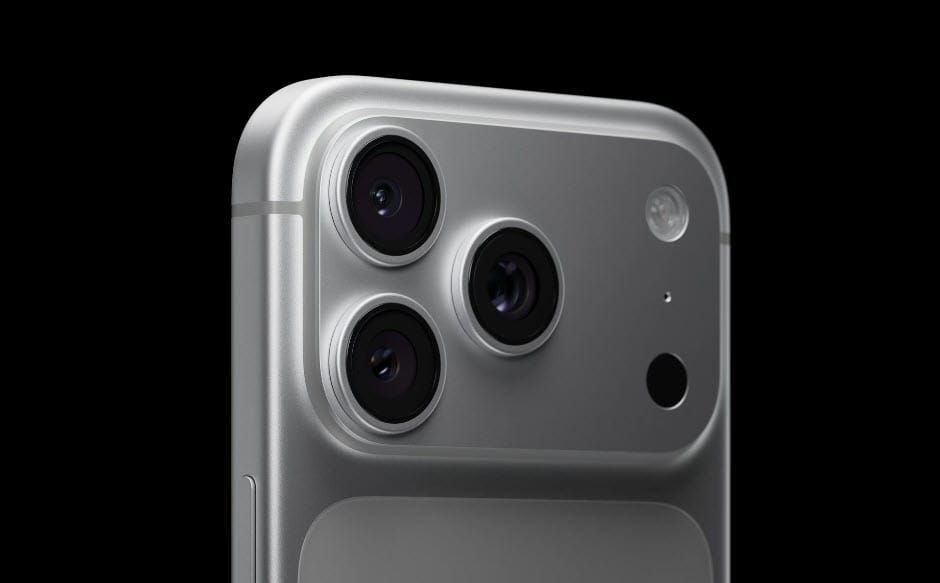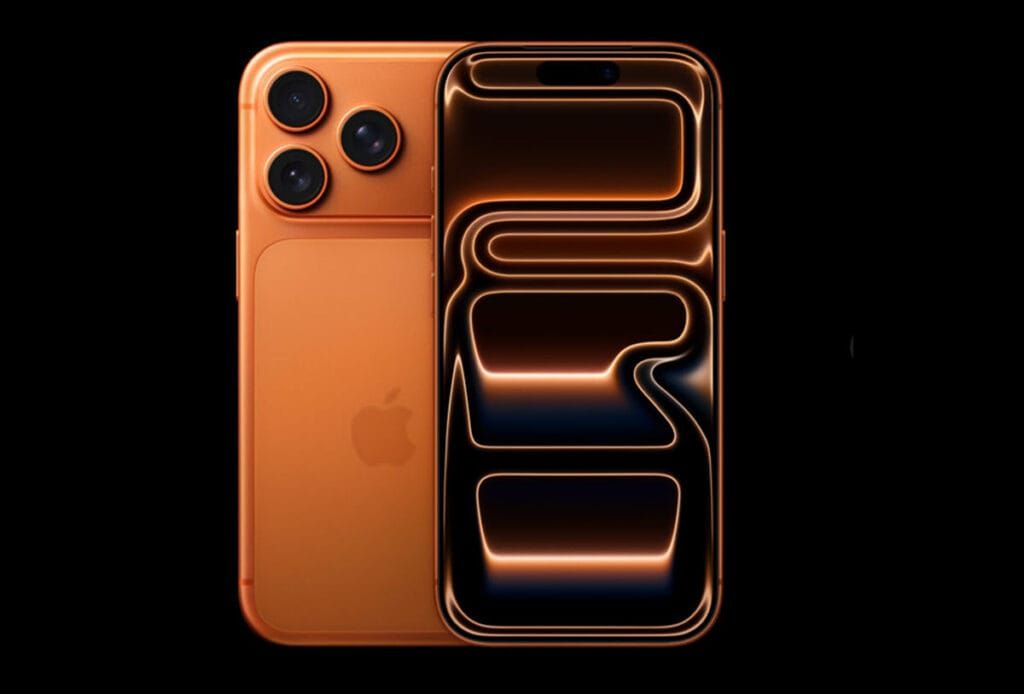Apple’s iPhone 17 Pro and Pro Max, unveiled on September 9, 2025, mark a significant departure from the incremental updates of recent years. With a redesigned aluminum unibody, a striking “camera plateau,” and a trio of 48MP Fusion cameras, Apple is clearly aiming to reclaim its throne as the smartphone photography and design king. But while the changes are ambitious and exciting, they also raise questions about practicality, competition, and whether Apple’s vision truly meets the needs of its most demanding users. Here’s why the iPhone 17 Pro’s camera and design innovations are a game-changer—and where they might fall short.
ALSO READ: Apple Unveils the Featherweight iPhone Air
A Design That Dares to Be Different
For years, iPhone designs have followed a predictable formula: sleek, minimalist, with iterative tweaks to materials and camera placement. The iPhone 17 Pro breaks this mold with a heat-forged aluminum unibody that is reminiscent of the HTC One design, ditching the titanium frame of its predecessors for better thermal performance and durability. The new “camera plateau”—a horizontal bar stretching across the phone’s back—houses the triple-lens system and gives the device a bold, almost Pixel-like aesthetic. Coupled with Ceramic Shield 2 on the front (offering 3x better scratch resistance) and Ceramic Shield on the back (4x more crack-resistant), the iPhone 17 Pro feels like a device built to last.
The two-tone design, with a glossy Ceramic Shield square cutout for wireless charging, adds visual flair, especially in new colors like Cosmic Orange, Deep Blue, and Silver. In hands-on impressions, the matte aluminum frame and soft-touch finish have been praised for feeling sturdier than the iPhone 16 Pro, though some may miss titanium’s premium vibe. The removal of the physical SIM tray in many regions (e.g., the U.S., Canada, and Japan) has also allowed Apple to squeeze in a larger battery, promising up to 39 hours of video playback on the Pro Max—the best in any iPhone yet
But is this redesign revolutionary or just a rehash? The camera plateau, while functional, echoes Google’s Pixel 9 series, which could polarize Apple fans who value originality. The thicker, wider camera bar also makes the phone less pocket-friendly and may cause wobbling on flat surfaces, despite claims it improves stability. Moreover, the switch to aluminum, while practical for heat dissipation, feels like a step back from titanium’s luxury appeal, especially at the iPhone 17 Pro’s starting price of $1,099 (though it now includes 256GB of storage). Apple’s design gamble is bold, but it risks alienating users who prefer the understated elegance of past Pro models.
A Camera System Built for Creators

The iPhone 17 Pro’s camera system is where Apple flexes its muscles. For the first time, all three rear cameras—Main, Ultra Wide, and Telephoto—are 48MP Fusion lenses, offering what Apple calls the “equivalent of eight lenses” in your pocket. The new Telephoto camera, with a 56% larger sensor and a next-generation tetraprism design, delivers 4x optical zoom at 100mm and 8x at 200mm—the longest optical-quality zoom ever on an iPhone. This leap brings Apple closer to competitors like the Vivo X200 (8.7x optical zoom) and Samsung Galaxy S25 Ultra (5x optical zoom), though it still trails in digital zoom capabilities (40x vs. Samsung’s 100x AI-enhanced zoom).
The 18MP Center Stage front camera is another standout, featuring a square sensor that auto-adjusts for group selfies and allows landscape shots without rotating the phone. The addition of Dual Capture, which records simultaneously with front and rear cameras, and support for ProRes RAW, Log 2, and genlock (via Blackmagic Camera ProDock) positions the iPhone 17 Pro as a filmmaker’s dream. These features cater to content creators and professionals, offering cinema-grade tools like enhanced stabilization and compatibility with industry-standard workflows.
Yet, there’s a catch. The Telephoto’s 4x optical zoom is technically a downgrade from the iPhone 16 Pro’s 5x at 120mm, relying on cropping for the 8x mode, which may compromise quality at higher zooms. The absence of a variable aperture system, rumored for the iPhone 18, limits depth-of-field control compared to some Android rivals like the Samsung Galaxy S9 series. And while ProRes RAW and genlock are exciting for pros, they’re niche features that may not resonate with everyday users who just want point-and-shoot simplicity. The upgraded Photonic Engine and AI-driven noise reduction are welcome, but Apple’s competitors have been leveraging AI for similar enhancements for years.
The Bigger Picture: Innovation vs. Competition
Apple’s focus on performance, with the A19 Pro chip and a vapor chamber cooling system delivering 40% better sustained performance, complements the camera and design upgrades. The N1 chip enables Wi-Fi 7, Bluetooth 6, and Thread, enhancing connectivity for features like AirDrop. But at a time when competitors like Samsung and Google are pushing the boundaries with AI-driven features (e.g., Google’s Audio Magic Eraser) and higher zoom capabilities, Apple’s innovations feel like a catch-up in some areas. The iPhone 17 Pro’s $100 price hike, even with doubled base storage, may also sting for budget-conscious buyers, especially when the standard iPhone 17 offers a 48MP Dual Fusion system and ProMotion display for $799.

The iPhone 17 Pro’s redesign and camera upgrades are a bold statement from Apple, blending professional-grade tools with a striking new look. The aluminum unibody, camera plateau, and 48MP triple-lens system make it a powerhouse for creators, while the improved battery life and connectivity options broaden its appeal. However, the design’s departure from Apple’s iconic aesthetic, the Telephoto’s zoom trade-offs, and the lack of groundbreaking AI features leave room for skepticism.
In a fiercely competitive market, the iPhone 17 Pro is a massive upgrade—but it’s not untouchable.For photographers, videographers, and Apple loyalists, the iPhone 17 Pro is a compelling choice, especially if you’re upgrading from an older model. But if you’re already rocking an iPhone 16 Pro or prioritize cutting-edge AI and zoom, you might want to wait for the iPhone 18 or explore Android alternatives. Apple has set a new standard, but the jury’s out on whether it’s enough to dominate the smartphone landscape in 2025.

